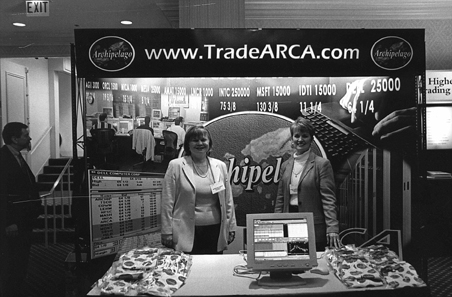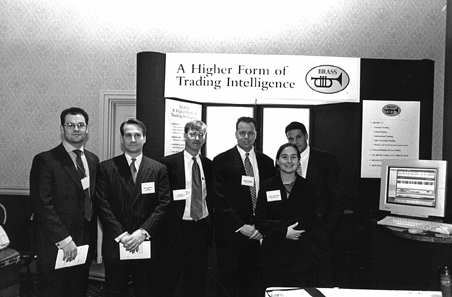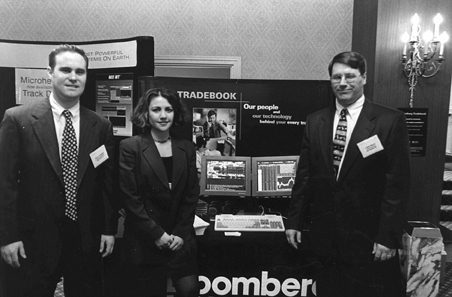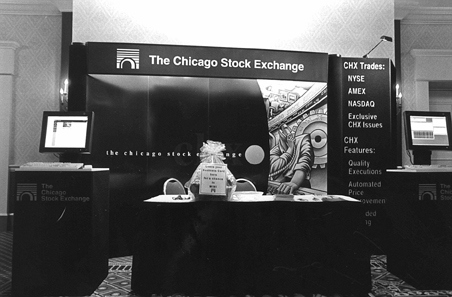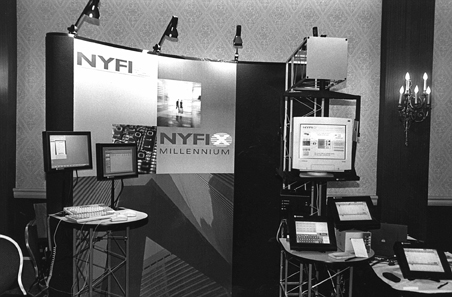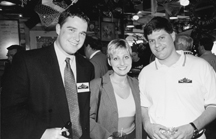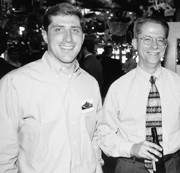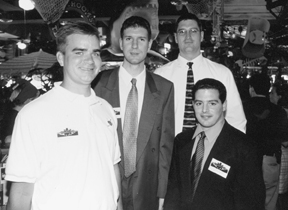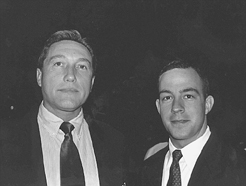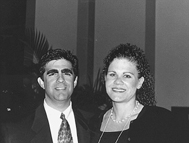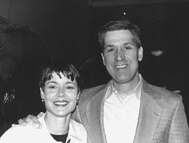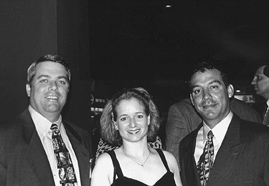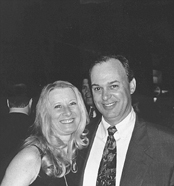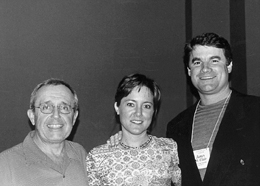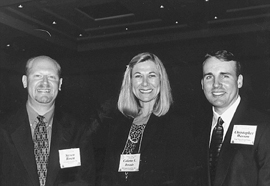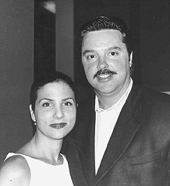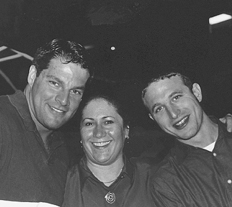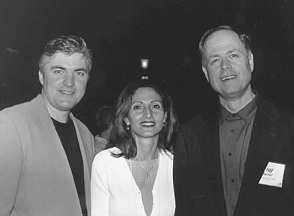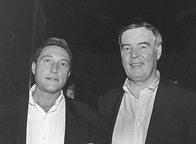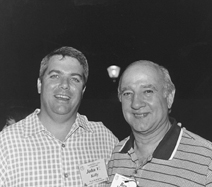Golf Outing

Bruce Domoto, Chicago Stock Exchange, Chicago; Earl Lyden, guest, Ellen Tressel, Ron Rzonca, both Butler Wick, Youngstown.

Greg Hawkins, BMO Nesbitt Burns, Toronto; Jim Stearns, Susquehanna Partners, Bala Cynwyd; Debbie Dahn, McDonald Investments, Cleveland; Dave Puckett, Susquehanna
Partners, Bala Cynwyd.

Al Sarnatora, BNY ESI, New York; Kathy Stetz, Key Asset, Cleveland; Stacy Ticsay, Weeden & Co., Chicago; Matt Clemens, Shaker Investments, Cleveland.

Brenton Luce, Shaker Investments, Jim Macko, McDonald Investments, both Cleveland; Jack Shumacker, Raymond James, St. Petersburg; Matt Clemens, Shaker Investments, Cleveland.

Damon Belding, Capital Institutional Services, Dallas; Wade McGee, Jefferies and Co., New York; Matt Victorine, Capital Institutional Services, Dallas; Dave Deckelman, Baker & Co.,
Cleveland.

Kieth Zolkowski, First Fiduciary, Cleveland; Bill Schmidt, Merrill Lynch both New York; Neil Sullivan, Autranet, New York; Kathy Radka, Huntington Bank, Cleveland.
Opening Reception

Michael Roncone, Standard & Poor’s Securities, Boston; Barb Maniker, National City, Cleveland; Larry MacDonald, Standard & Poor’s Securities, New York.
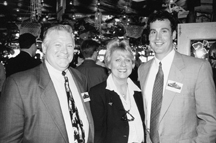
John O’Gorman, MH Meyerson, Maryellen Farrelly, Knight Securities, both Jersey City; Craig Spydell, Mcdonald Investments, Cleveland.
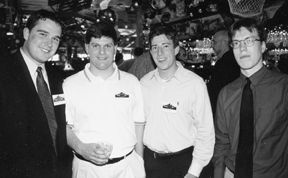
Ron Carroll, McDonald Investments, Mike Ziska, Eric Ingerman, both Midwest Research, Matt Holford, McDonald Investments, all Cleveland.
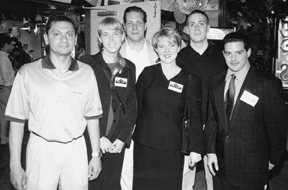
Officers and Directors
President: Ashish Mehta, National City, Vice President: Melissa Mellon, Gries Financial, Director: Jay Meagrow, McDonald Investments, Director: Sherry Humenik, McDonald Investments, Director: Jim Myers, National City, Secretary: Scott Cygan, McDonald Investments, all Cleveland.

Pat Hearnes, Midwest Research, Jeff Samilson, McDonald Investments, both Cleveland; Tim Grey, Pershing Trading, Jersey City.

Damon Belding, Matt Victorine, both Capital Institutional Services, Dallas; Gregg Bouwmans, Fleet Trading, Jersey City.
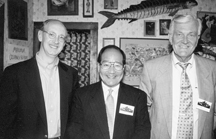
Greg Welsh, DLJ, New York; Bruce Domoto, Chicago Stock Exchange, Chicago; Ron Rzonca, Butler Wick, Youngstown.

Joanne Marlin, Cantor Fitzgerald, Chicago; Keith Zolkowski, First Fiduciary, Mark Sohay, Financial America, both Cleveland.

Tom Berlin, Berlin Financial, Joe Conway, Midwest Research,
both Cleveland, John O’Gorman, MH Meyerson, Jersey City.

Dana Berkley, Kathy Hutka, both Key Asset Management, Cleveland; Susan Jones, JP Morgan, Tricia Shea, ABN Amro, both Chicago.

Stephen Dakis, Reuters, Chicago; Jay Meagrow, McDonald Investments, Cleveland; Brian Burke, Reuters, Chicago.
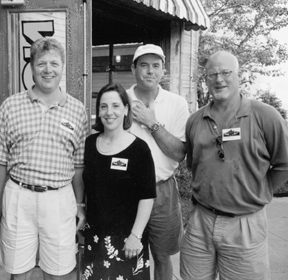
Greg Hawkins, BMO Nesbitt Burns, Toronto; Lisa Toth, AFA Financial, Cleveland; Dave Puckett, guest, Jim Stearns, Susquehanna Partners, Bala Cynwyd.
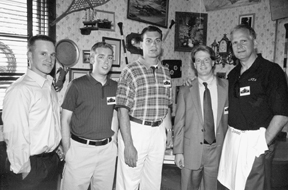
Mark Wazevich, McDonald Investments, Mac Aussem, Ken Nazstedt, Dave Deckelman, all Baker & Company, Bob Wazevich, McDonald Investments, all Cleveland.
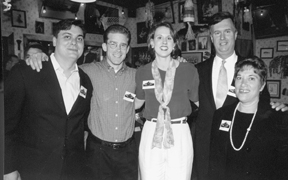
Dean Karabogias, Legg Mason, Baltimore; Geoffrey Gioia, Midwest Research, Linda Heuman, National City, both Cleveland; Dan Davies, Lynch Jones and Ryan, Chicago; Barb Maniher, Nartional City, Cleveland.
Opening Reception Hyatt Regency

Mary McDermott-Holland, Franklin Portfolio Management, Jeanne Austin, Knight Securities, both Boston; Eileen McEntyre, Nutmeg Securities, Walnut Creek.

Jack Tierney, Jefferies & Co., Lauren Brenner, Selly and Jack Genovese, all Cantor Fitzgerald, New York; Rose Lawrence, Charles Schwab, Denver.

Chris Borris, Goldman Sachs, Saahi Dias, Merrill Lynch, both New York; Chris Keogh, Goldman Sachs, Chicago.

Jennifer Iannucci, Patty Drury, both Fleet Trading, Jersey City; Clint Schoen, NDB Capital Markets, Jersey City; John Ciorra, First Albany, Patricia Koetzner, Neuberger Berman, both New York; Randi Feldman, NDB Capital Markets, Jersey City.

Diane Donelly, Investec Ernst, Sandra Pipert, JP Morgan, Darren Croce, Gruntal & Co, Silva Bayizian, JP Morgan, Mike Herrero, CE Unterberg Towbin, all New York.

John Luppo, AM Capital, New York; John Coggins, Schwab Capital Markets, Denver; Charlotte Whitten, Stephens, Littlerock; Steve Puleo, Mike Conerford, both Adams Harkness and Hill, Boston.
Golf Outing
Cocktail Reception

Robert Wotczak, Prime Executions, New York; JT Auty, Knight Securities, Jersey City; Jason Sharfstain, GMST World Markets, Orlando.
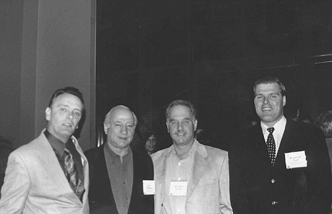
Bill Wheelan, Wilson Davis & Co., Boca Raton,; Ben Modica, Herzog Heine Geduld, Jersey City; Mike Dobin, Mayer & Schweitzer, Jersey City; Kenneth Nott, Canaccord Capital Corp., Toronto.

Tim and Debbie Grazioso, Cantor Fitzgerald, Lee Williams, Steve Hill, both PTJP Partners, all New York.
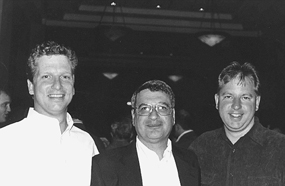
Chris Amato, International Assets Advisory Corp., Winter Park; Bob Nardone, Pershing Trading, Jersey City; Bobby Johns, Merrill Lynch & Co., New York.
Dessert Reception and Illuminations
Golf Outing

Liz and Greg Cavallo, LaBranche Financial Group, New York; Frances Proctor, Suntrust Bank, Orlando; Richard Fremont, LaBranche Financial Group, New York.
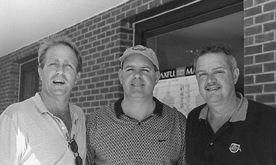
Darryl Proctor, Suntrust Bank, Atlanta; Josh Kingdon, ICC Capital Management, Orlando; Mike Weber, BrokerageAmerica, Derek and Jamie Gottschall, BNY Brokerage, all New York.

Steve Kreminski, BrokerageAmerica, New York; Aaron Vasil, KWS, Chicago; Cynhtia Englise, Brokerage America, Ed Donovan, Mogavero Lee, both New York.
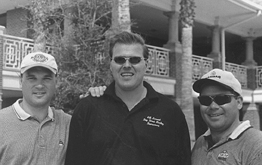
John Kable, guest, Mary Varee, Shaker Investments, Orlando; John Kelly, Sterling Financial, Boca Raton.

Brian McGovern, Standard & Poors Securities, Robert Wotczak, Prime Executions, both New York; Richard Merced, Tradestation Securities, Miami.





